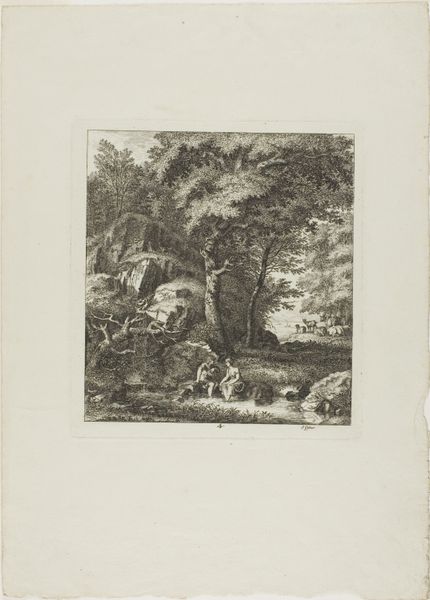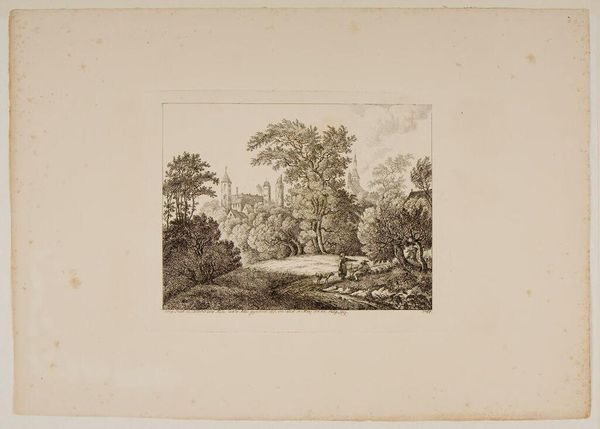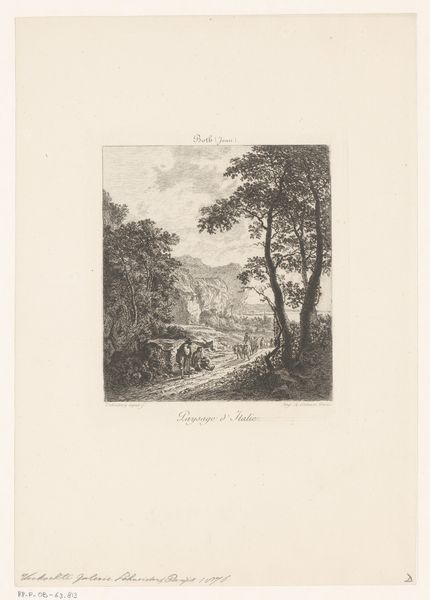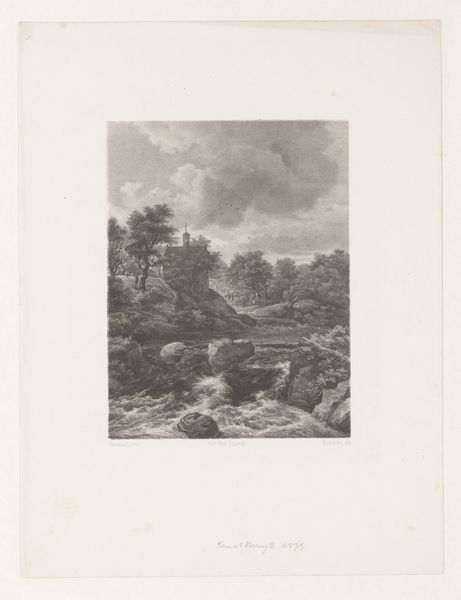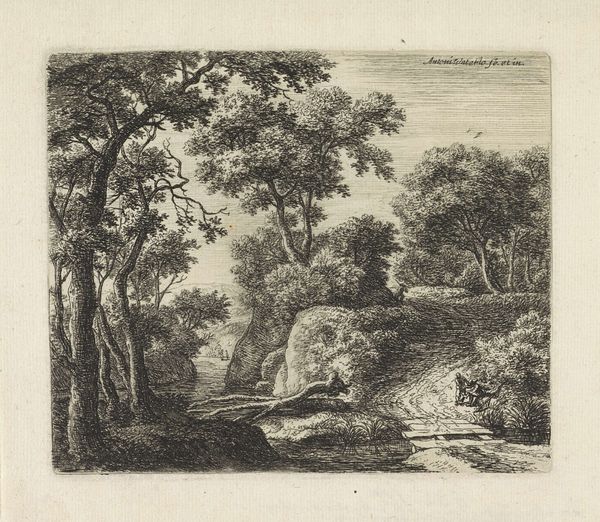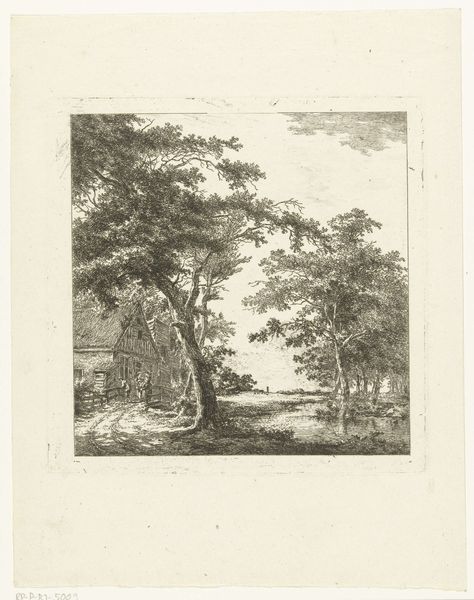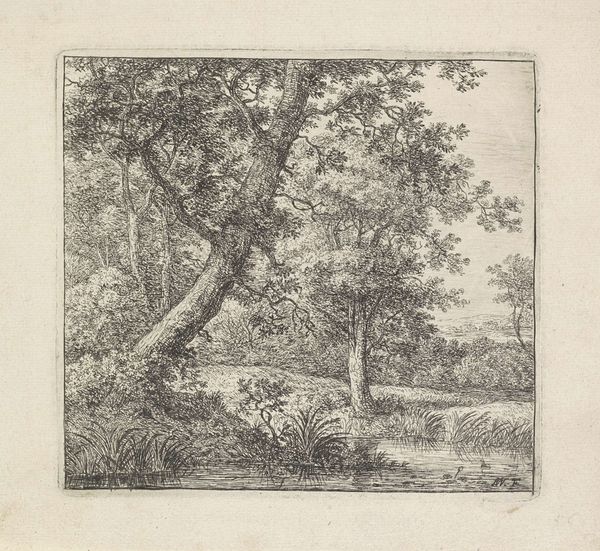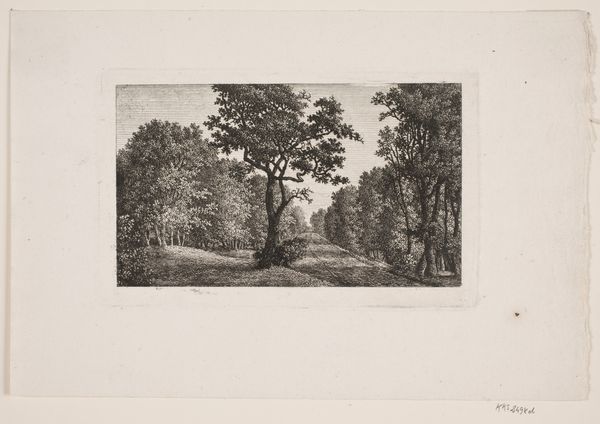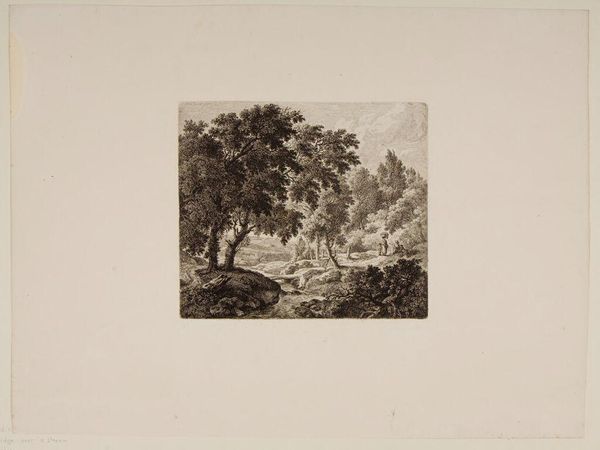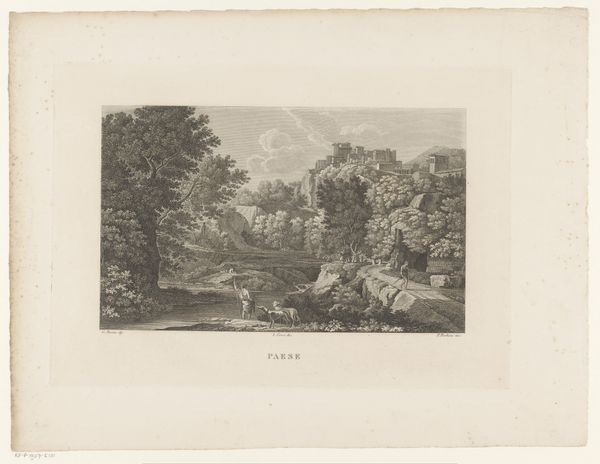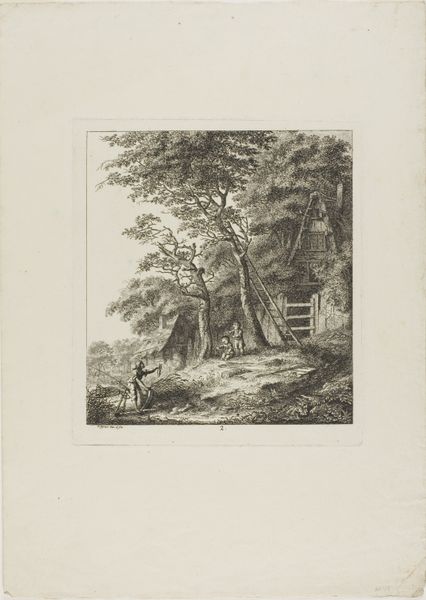
Dimensions: 215 × 187 mm (plate); 389 × 280 mm (sheet)
Copyright: Public Domain
Curator: This etching is titled "Man Reading a Book," made in 1764 by Salomon Gessner. Look closely at the detail; it's all done with etching on paper. Editor: I’m immediately struck by the composition. It’s intricate, detailed… almost claustrophobic in a way. All those lines. But it's a serene claustrophobia, if that makes sense. Curator: Yes, Gessner, a key figure in the German Romantic movement, was particularly interested in how nature could evoke feeling. His exploration of printmaking enabled broader circulation and consumption of landscape imagery. Editor: I find it fascinating that the focal point isn't really the man reading—he’s so small! Instead, we see this idyllic natural scene: the trees, the stream, even those distant cattle. Is Gessner maybe suggesting that knowledge and contemplation exist in harmony with nature? Or is this more about the societal implications of leisure in the 18th century, where literacy, like the very material, would be class-bound? Curator: Possibly both! This etching medium was interesting; Gessner was consciously engaging in an established tradition but also finding ways to subvert expectations about "high" art. Prints made art accessible to a wider audience; did this impact its social standing? I'd love to know more about the economic aspect, what his work was worth and to whom. Editor: The cascading effect of the lines, forming shadows and light, really pulls you in. It invites a long, reflective gaze and evokes those sentiments about freedom in nature. And also a certain pre-industrial quietude, which maybe disguises that very class tension we just touched on. Curator: Considering its materiality and repetitive elements, one must wonder about the manual labor involved in producing these prints at scale. Was it arduous? Exploitative? How did these concerns influence its artistic value at the time? Editor: Exactly! Those tensions are often embedded, and it’s our job to uncover them. We read the natural world around the figure but, to me, we also have to wonder, whose nature is this and who has access? Curator: Thinking through those multiple layers helps contextualize what the art is, who could access the piece, and its role in the expanding print culture. It all feeds back to the artist's decisions, the value, and its place within art history. Editor: Well, Gessner certainly gives us a lot to contemplate about the art historical, social and ecological context surrounding "Man Reading a Book," reminding us to interrogate landscapes—and artistic choices—with fresh eyes.
Comments
No comments
Be the first to comment and join the conversation on the ultimate creative platform.
